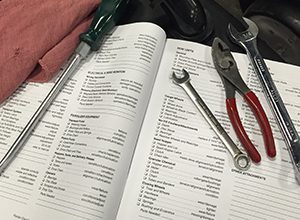Whew! It was a busy spring waiting on the weather and then planting within a narrow time frame. That last night of planting got late and you rolled onto the yard about 11:00 pm, but it was finished and it felt good to have all the seed in the ground. Now you can relax . . . RELAX?! . . . no way, not with spraying to do and side-dressing to get done. There’s really never a dull moment around the farm in the spring.
Now it’s summer and things are starting to slow down — at least just a little. You walk into the machine shed and there sits the planter still needing to be put away for the season. You think to yourself, “It looks good, I think I’ll just let it set until next year.”
Not a good idea…
For your planter to run at peak performance, efficiency and accuracy, what you do now to properly store it is just as important, if not more important, as what you do to prepare it for planting next spring.

To guide you on how to put your planter away properly, here’s a checklist of what should be done to it now. Depending upon your planter, not all items may apply.
- Store the planter in a sheltered area if at all possible. Moisture and planters are not a good combination. Plus, the trade-in value will be much better if you keep it inside.
- Remove all dirt and trash wrapped on sprockets and shafts. Any residue will draw moisture and cause corrosion.
- Clean drive chains and coat with rust preventative spray, or remove them and submerge in oil.
- Appropriately lubricate the planter and row units at all points of lubrication.
- Inspect for worn or damaged parts and order replacements.
- Empty all seed and granular chemical hoppers and make sure they are clean.
- Remove, clean and properly store all seed meters and discs. Depending on the meter you are using, refer to the proper storage instructions in the Operator’s Manual.
- Remove the vacuum hose from each seed meter. Operate vacuum fan at full hydraulic flow for two minutes to clear dust and debris from manifolds, hoses and fittings.
- Clean the air breathers on the analog vacuum and pressure gauges.
- Disassemble, clean and grease all U-joint slides.
- Grease or paint all disc openers and blades and all row marker disc blades to prevent corrosion.
- Flush and drain all liquid fertilizer tanks, hoses, and metering pump with clean water. If equipped with a piston pump, refer to your Operator’s Manual for storage instructions.
- Empty and clean all dry fertilizer hoppers. Disassemble and clean the metering augers. During reassembly, coat all metal parts with a rust preventative.
If equipped with a bulk fill system, also perform the following for proper storage.
- Clean out bulk fill hopper, entrainment assembly and delivery hoses.
- Disconnect delivery hoses from entrainer ports. Install the small orange caps onto ports and reattach hoses to caps.
- Disconnect delivery hoses from air dissipator at each row unit. Install the large orange caps onto ports and reattach hoses to caps.
- Make sure all bolts and fasteners used to assemble and attach the entrainment assembly are tight.
- Loosen knobs to remove pressure from entrainer clean-out door gaskets.
- Inspect all seed delivery hoses and replace any that are worn, cut, or cracked.
There you go, your planter has now been throughly inspected and properly prepared for storage. Also, by ordering replacement parts right away, you will have them when you get your planter back out next spring. For more information, additional care tips and checklists, refer to the Operator’s Manual or contact your Kinze dealer.
